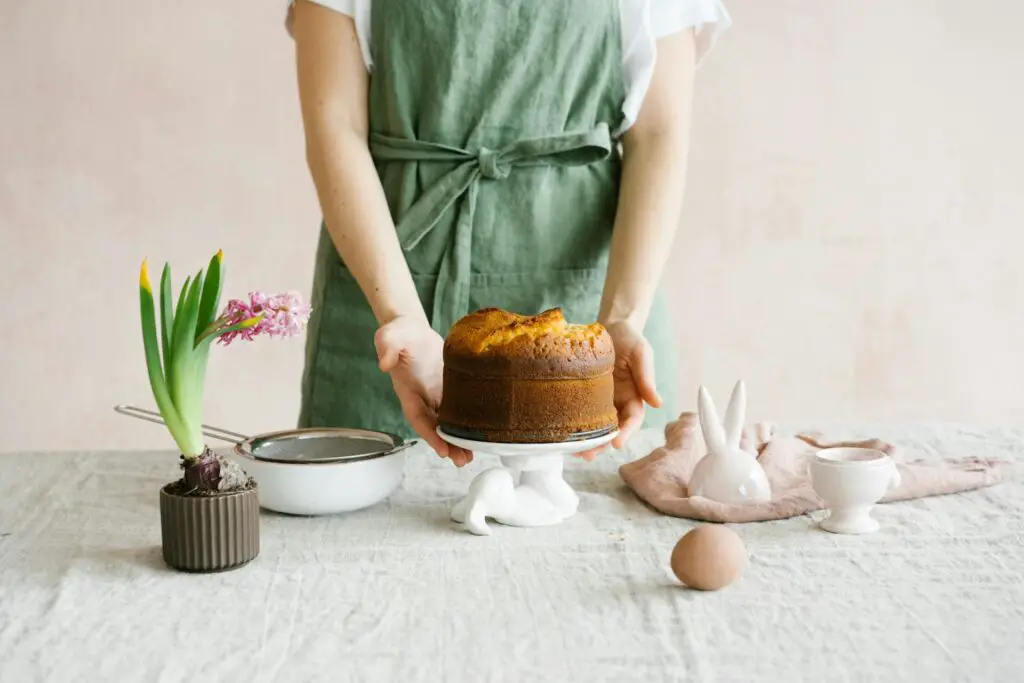You followed the recipe to the letter, measured everything just right, and waited eagerly by the oven—only to pull out a cake that looked more like a pancake. Frustrating, right?
Here’s the thing: baking isn’t just about mixing ingredients. It’s a science experiment happening in your kitchen. Every egg, scoop of flour, and spoon of sugar sets off a chain reaction.
In this post, we’ll break down why cakes sometimes refuse to rise and, more importantly, how you can stop it from happening again. Think of it as your troubleshooting guide to taller, fluffier, happier cakes.
The Role of Leavening Agents
Baking Powder & Baking Soda
Cakes rise because tiny bubbles of gas get trapped inside the batter and expand in the oven. That gas is carbon dioxide, and it comes from your leavening agents—baking powder and baking soda.
When baking soda meets an acid (like buttermilk or lemon juice), it fizzes up and creates bubbles. Baking powder takes things further because it already contains an acid.
It reacts twice: once when mixed with liquid and again when heated. That double reaction is why most cakes rely on it. Without those bubbles, your cake is stuck at ground level—dense, flat, and sad.
Common Mistakes
The trouble starts when your leavening agents aren’t doing their job. Expired baking soda or powder loses its fizz. You might not notice until your cake comes out like a brick.
Another slip-up is swapping them without thinking. Baking soda is about four times stronger than baking powder, so you can’t just replace one with the other in equal amounts. And then there’s measurement.
Too little and your cake stays low. Too much and the batter balloons quickly, then collapses like a popped balloon.
Quick Fix
Luckily, you can check freshness in seconds. Drop half a teaspoon of baking powder into warm water—it should bubble right away. For baking soda, stir a pinch into vinegar.
If nothing happens, toss it and buy fresh. If you’re out of one, you can sometimes substitute, but you’ll need to adjust for strength and acidity.
For example, one teaspoon of baking powder can be swapped with a quarter teaspoon of baking soda plus half a teaspoon of cream of tartar. It’s not perfect, but it saves a last-minute grocery run.
Eggs and Their Structure
Eggs do far more than add richness to a cake—they’re little powerhouses of structure and stability.
When you beat eggs, the proteins stretch out and form a network that traps air, kind of like tiny balloons waiting to expand in the oven. That trapped air is what helps give your cake lift and softness.
But here’s the tricky part: beat them too little and you won’t trap enough air, leaving your cake dense; beat them too much and the structure weakens, so the bubbles burst and your cake sinks.
It’s a fine line, like blowing up a balloon just enough without popping it.
Temperature also plays a big role. Cold eggs are stubborn and don’t whip as well, while room-temperature eggs blend easily and create more stable foam.
That’s why most recipes quietly suggest pulling your eggs out ahead of time—they whip better, mix smoother, and set you up for a cake that rises proudly instead of sulking in the pan.
Flour and Gluten Formation
Flour is more than just the bulk of your batter—it’s the framework that holds everything together.
When flour meets liquid and gets mixed, gluten forms, creating a stretchy web that traps air bubbles from your leavening agents and eggs.
Those bubbles then expand in the oven, giving your cake height and tenderness. But here’s the catch: stir or beat the batter too much and that web becomes overdeveloped, turning stretchy into rubbery.
The result? A cake that feels more like bread than something fluffy and light. The type of flour you use also matters.
High-protein flours, like bread flour, build strong gluten networks, which are perfect for chewy loaves but terrible for delicate cakes.
Low-protein flours, like cake flour or pastry flour, keep the gluten gentler, so your cake bakes up soft and tender.
In short, the right flour plus just the right amount of mixing is the secret handshake to a cake that rises beautifully and melts in your mouth.
Sugar and Fat: Balance Matters
Sugar and fat might seem like the “fun” ingredients, but they’re also hard-working players in whether your cake rises or falls.
When sugar is beaten with butter, the sharp sugar crystals cut little air pockets into the fat, creating a base full of tiny bubbles that later expand in the oven—skip this step or rush it, and your cake starts flat-footed.
Butter and oil add much-needed moisture and richness, but balance is everything; too little and your cake dries out, too much and the batter becomes heavy, sinking under its own weight.
That’s why properly creaming butter and sugar is such a big deal—it’s not busywork, it’s the foundation of structure.
Done right, the mixture turns pale and fluffy, like whipped frosting, and sets your cake up for a rise that’s light yet sturdy.
Ignore this step, and you’ll quickly see that sweetness and richness alone can’t save a cake that never left the pan.
Oven Science
Your oven isn’t just a box that gets hot—it’s the final stage where all the chemical magic comes together, and timing is everything.
Preheating matters more than most people think, because those first few minutes are when your leavening agents release gas and the batter begins to set; if the oven’s not hot enough yet, you lose that crucial lift before the cake has a chance to firm up.
On the flip side, cranking the temperature too high can be just as bad—your cake sets on the outside before it’s had time to rise, leaving you with a dome that looks promising but hides a dense middle.
Go too low, and the rise happens in slow motion, often collapsing before the structure locks in.
Rack placement also plays a sneaky role: too close to the bottom and the heat scorches, too high and the top browns too quickly, while the sweet spot is usually the middle, where airflow circulates evenly.
Mixing Methods & Techniques
How you mix your batter can make or break your cake, no matter how perfect the ingredients are.
The creaming method—beating butter and sugar until pale and fluffy—creates a strong air-filled base that helps your cake rise tall and light, while the all-in-one method, where everything goes into the bowl at once, is quicker but doesn’t trap nearly as much air, which can lead to a denser crumb.
Beyond the method, technique matters just as much.
Overmixing once the flour is in develops too much gluten, giving you a chewy, bread-like texture instead of tender cake, while undermixing leaves streaks of flour that bake into dry, tough pockets.
The real art comes with folding in flour or delicate ingredients: slow, sweeping motions that keep the trapped air bubbles intact.
Stir too roughly and you’ll deflate your batter faster than a popped balloon. Gentle mixing is the invisible skill that separates a cake that lifts high and proud from one that slumps in the middle.
Environmental Factors
Even if you follow a recipe perfectly, your environment can still throw a wrench into the mix.
Humidity, for example, acts like a sneaky extra ingredient—on damp days, flour absorbs moisture from the air, making your batter wetter than expected and causing cakes to sink or bake unevenly.
On dry days, the opposite happens, and your batter may feel thicker, leading to a denser result. Then there’s altitude, which is a whole different beast.
At higher elevations, the air pressure is lower, so gases from your leavening agents expand faster, liquids evaporate more quickly, and cakes rise too quickly before collapsing in the center.
That’s why mountain bakers often adjust recipes by reducing sugar, increasing liquid, or lowering leavening amounts.
In short, your kitchen’s environment isn’t just background noise—it directly changes how your cake behaves, and sometimes success comes down to tweaking the recipe to match the weather outside or the height of the ground beneath your feet.
Troubleshooting Checklist
- Did you check your leavening agent’s freshness?
- Was your oven fully preheated?
- Did you overmix or undermix?
- Were the ingredients at the right temperature?
- Is your recipe designed for your environment (altitude/humidity)?
Final Words
Baking is pure chemistry, and every ingredient has a job to do. When one part is off, the whole cake feels it.
But here’s the good news—every flat, dense, or sunken cake is just a hands-on science lesson in disguise. You learn, you adjust, and you get better.
So next time your cake flops, don’t toss the apron aside. Revisit the science, tweak your approach, and step back into the kitchen with confidence.
Your next bake might just rise to the occasion.
FAQs
Can I still eat a flat cake?
Absolutely. It might not win a beauty contest, but it’ll still taste good. Think of it as a cake-bar hybrid—slice it, add some frosting or fruit, and no one will complain.
How do I store baking soda and baking powder to keep them fresh?
Keep them in airtight containers in a cool, dry spot. Moisture and air are the enemies here. Avoid storing them near the stove or dishwasher, where heat and humidity sneak in.
Why do some recipes use both baking powder and baking soda?
Each has its own job. Baking soda neutralizes acidic ingredients and helps with browning, while baking powder provides extra lift. Using both balances flavor and structure.
Do silicone vs metal pans affect the rise?
Yes. Metal pans conduct heat better, giving you a stronger initial rise. Silicone heats more slowly, which can mean gentler edges and sometimes a flatter cake.
Can I fix a cake that’s already baked and didn’t rise?
You can’t make it rise after the fact, but you can repurpose it. Cut it into cubes for trifle, layer it with cream for parfaits, or crumble it into cake pops. Flat cake = tasty opportunity.



